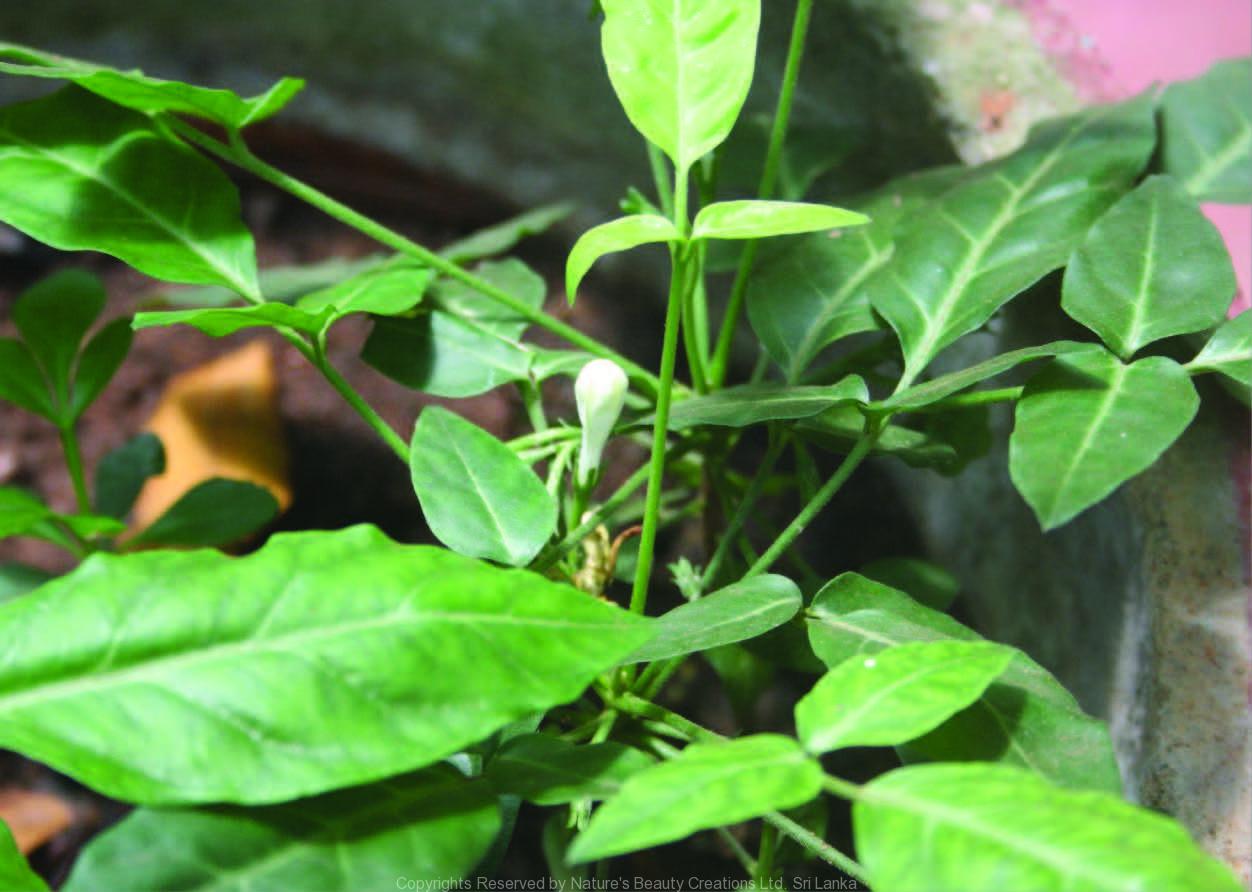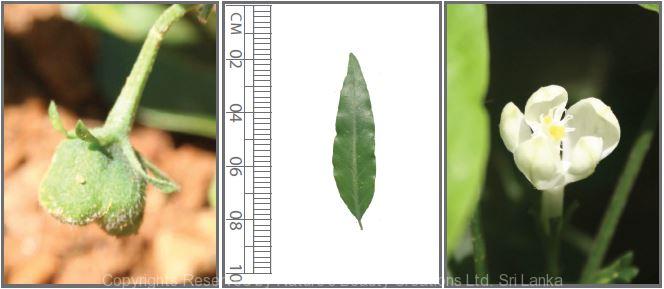

Traditional Knowledge
Useful plant parts :
Whole plant
Uses in traditional medicine :
- Decoction of the whole plant is taken for fever caused by parasitic micro-organisms
- Whole plant is taken as a blood purifier
Scientific Research
Chemical constituents:
Terpenes: caryophyllene and its derivatives, phytol, sterols: campesterol, stigmasterol, β-sitosterol from plant
Bioactivity :
Aqueous extract of plant: anti-malarial: decoction of plant: anti bacterial against E-coli
Clinical:
References : Dharmadasa, R. M. et al., (2012), Cytotoxicity and in vivo antimalarial activity of aquouse whole plant extract of Munronia pinnata (Wall.) Theob. (Meliaceae) in mice, Research journal of medicinal plants, 1, 1-7. Dharmadasa, R. M., et al., (2013). Comparative Pharmacognostic Evaluation of Munronia Pinnata (Wall.) Theob. (Meliaceae) and Its Substitute Andrographis paniculata (Burm.f.) Wall. Ex Nees (Acanthaceae), World Journal of Agricultural Research, 1(5), 77-81. Hapuarachchi, S. D. and Senarath, W. T. P. S. K., (2007), A comparative study of the antibacterial activity of crude extracts of Munronia pinnata and Andrographis paniculata against E- coli, Sri lanka association for advancement of science-proceedings of the 63 rd annual sessions, part 1-abstrcts, 19-20. Napagoda, M. et al., (2013), Munronia pinnata (Wall.) Theob.: Unveiling phytochemistry and dual inhibition of 5-lipoxygenase and microsomal prostaglandin E2 synthase (mPGES)-1, Journal of ethnopharmacology.
Copyrights Reserved By
Natures Beauty Creations



